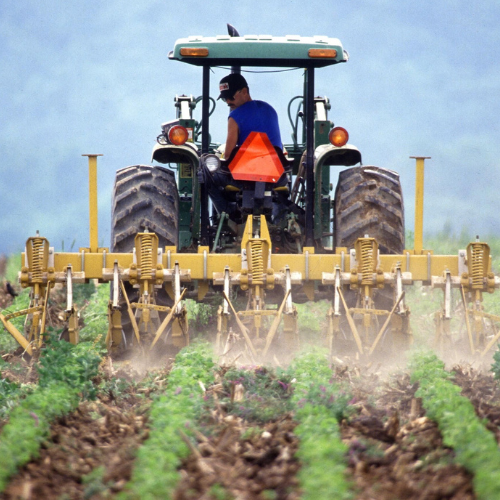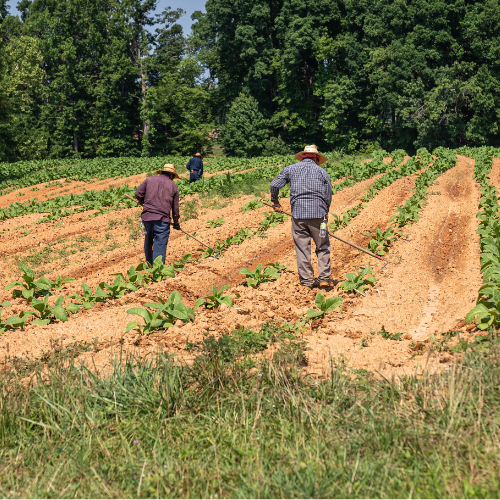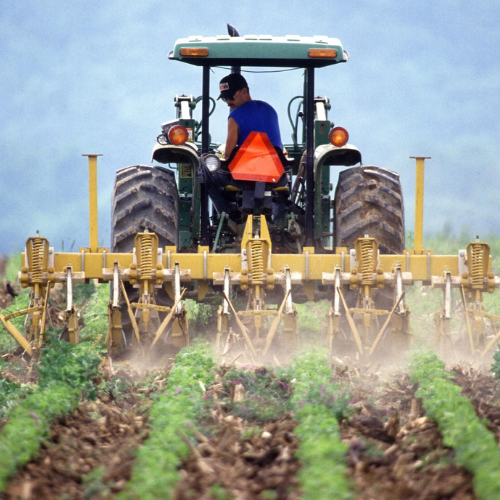Introduction:
In today’s world, marked by escalating climate concerns, food scarcity, and socio economic disparities, the urgency for sustainable agricultural solutions is more critical than ever. Sustainable agriculture cooperatives serve as a beacon of hope for local farmers seeking to navigate these challenges while fostering community resilience. By focusing on organic farming and permaculture, these cooperatives empower farmers to pool resources, share knowledge, and engage in environmentally friendly food production. This article delves into the transformative potential of sustainable agriculture cooperatives, highlighting their benefits, operational frameworks, and real-world examples that showcase their success.
Understanding Sustainable Agriculture Cooperatives.
Sustainable agriculture cooperatives are collaborative organizations where farmers unite to pursue shared objectives. These objectives often include:
- Resource Sharing: Members collaborate by sharing equipment, land, and labor, thereby reducing individual costs and maximizing efficiency.
- Knowledge Exchange: Farmers engage in sharing best practices, innovative techniques, and valuable insights, creating a culture of continuous learning and improvement.
- Market Access: Cooperatives enable farmers to aggregate their products, enhancing their bargaining power and opening doors to larger markets.
- Community Support: By concentrating on local needs, cooperatives strengthen community bonds and promote regional food systems.
The essence of these cooperatives lies in their commitment to sustainable practices, such as organic farming and permaculture, which focus on ecological balance, biodiversity, and soil health. This approach not only yields healthier food but also contributes positively to the environment.

Advantages of Sustainable Agriculture Cooperatives.
- Economic Empowerment
- By collaborating, farmers can lower their operational costs and boost profit margins. For instance, a cooperative can jointly purchase seeds and fertilizers, obtaining bulk discounts that individual farmers might not be able to secure.
2. Environmental Sustainability
- Implementing organic farming and permaculture methods minimizes reliance on harmful pesticides and fertilizers, which promotes biodiversity and enhances soil health. This practice also aids in combating climate change by capturing carbon in the soil.
3. Social Cohesion
- Cooperatives create a sense of community among members, fostering collaboration and mutual support. This social framework can improve mental well being and cultivate a robust support network for farmers.
4. Food Security
- Focusing on local food production enables cooperatives to bolster food sovereignty, ensuring communities have access to fresh, nutritious produce while reducing dependence on industrial food systems.Quality over quantity sells.Very important.
5. Education and Skill Development
- Cooperative members often participate in training programs to learn sustainable farming techniques, business management skills, and marketing strategies, equipping them for success in their agricultural ventures.

Success Stories of Sustainable Agriculture Cooperatives.
- Organic Valley Cooperative (USA)
- Established in 1988, Organic Valley has evolved into one of the largest organic farmer cooperatives in the United States, comprising over 1,800 farmer members. The cooperative empowers its farmers by offering fair prices, access to markets, and support in sustainable farming practices. In 2020, Organic Valley reported over $1.1 billion in sales, highlighting the profitability of sustainable agriculture cooperatives.
2. La Via Campesina Movement (Global)
- La Via Campesina is a global movement that represents small scale farmers, agricultural workers, and indigenous communities. Advocating for food sovereignty and sustainable farming practices, the movement utilizes cooperative structures to share resources and knowledge, forming a worldwide network of support. Its influence has led to significant policy changes that benefit small farmers in various countries.
3. Gaviotas Project (Colombia)
- Founded in the 1970s, Gaviotas is a sustainable community in Colombia that emphasizes permaculture and renewable energy. The community transformed a desolate landscape into a flourishing ecosystem, creating a self-sustaining economy that provides jobs and food security for its residents. Gaviotas produces organic food and renewable energy products, showcasing how sustainable agriculture cooperatives can thrive even in challenging environments.
Steps to Establish a Sustainable Agriculture Cooperative.
Creating a sustainable agriculture cooperative involves careful planning and dedication from its members. Here are the essential steps:
- Identify Common Goals
- Gather interested farmers to discuss shared objectives, whether it’s increasing income, promoting sustainable practices, or accessing new markets.
2. Form a Legal Structure
- Register the cooperative as a legal entity, ensuring compliance with local regulations. This step is crucial for establishing credibility and facilitating access to funding.
3. Develop a Business Plan
- Outline the cooperative’s objectives, operational model, marketing strategy, and financial projections. A well crafted business plan will guide initial efforts and attract potential investors or grants.
4. Gather Resources
- Identify necessary resources, including land, equipment, and funding sources. Consider seeking grants or loans specifically designed for agricultural cooperatives.
5. Implement Sustainable Practices
- Train members in organic farming and permaculture techniques, focusing on soil health, biodiversity, and efficient resource use.
6. Market Products
- Develop a marketing strategy to promote the cooperative’s products. Consider direct to consumer sales through farmers’ markets or community supported agriculture (CSA) programs.
7. Evaluate and Adapt
- Continuously assess the cooperative’s performance and adapt strategies as necessary. Encourage feedback from members to foster a culture of improvement.
Financial Insights.
Starting a sustainable agriculture cooperative requires a financial investment. Here are some illustrative calculations regarding potential costs and revenue:
- Start Up Costs:
- Land Lease or Purchase: $10,000 – $50,000 (depending on location)
- Equipment (tractors, tools, etc.): $20,000
- Seeds and Inputs: $5,000
- Legal Registration: $1,000
- Marketing and Branding: $2,000
- Total Estimated Start Up Costs: $38,000 – $78,000
2. Revenue Projections:
- Average Yield per Acre (Organic Vegetables): 10,000 pounds
- Selling Price per Pound: $2.50
- Total Revenue per Acre: $25,000
- If the cooperative manages 10 acres, Total Revenue: $250,000
3. Operating Expenses:
- Labor: $50,000
- Utilities: $5,000
- Maintenance: $5,000
- Total Operating Expenses: $60,000
4. Net Profit:
- Total Revenue: $250,000
- Total Operating Expenses: $60,000
- Net Profit: $190,000
These figures illustrate the financial viability of sustainable agriculture cooperatives, showing that, with proper planning and execution, they can be lucrative for their members.

Challenges and Solutions.
While sustainable agriculture cooperatives offer numerous advantages, they also face challenges. Here are some common obstacles and potential solutions:
- Challenge: Limited Access to Capital
- Solution: Explore grants, low-interest loans, and crowdfunding opportunities specifically designed for agricultural cooperatives. Building partnerships with local NGOs can provide financial support as well.
2. Challenge: Knowledge Gaps
- Solution: Organize training sessions and workshops led by experienced farmers or agricultural experts to enhance members’ skills and knowledge.
3. Challenge: Market Competition
- Solution: Differentiate products by emphasizing organic and sustainable practices. Utilize branding and storytelling to connect with consumers who value ethical sourcing.
4. Challenge: Weather and Climate Risks
- Solution: Implement resilience strategies, such as crop diversification and water conservation techniques, to mitigate the impacts of climate variability.
5. Challenge: Internal Conflicts
- Solution: Establish clear communication channels and conflict resolution processes within the cooperative to address disputes promptly.
Inspiring Action.
The potential of sustainable agriculture cooperatives extends beyond the individual farmers; they can fundamentally transform entire communities. By joining forces, farmers can create viable businesses that uplift local economies, promote environmental sustainability, and enhance food security. Here are actionable steps individuals can take to inspire change:
- Educate Others: Share the benefits and successes of sustainable agriculture cooperatives with fellow farmers and community members. Host informational sessions or workshops to raise awareness.
- Start Small: If forming a cooperative seems overwhelming, consider beginning with a small group of farmers to test the model. Gradually expand as confidence and resources grow.
- Connect with Existing Cooperatives: Reach out to established cooperatives for mentorship and guidance. Learning from their experiences can provide valuable insights.
- Advocate for Support: Engage with local government and organizations to advocate for policies that support sustainable agriculture and cooperative development.
- Foster Community Engagement: Involve local consumers in the cooperative’s journey by offering opportunities for community supported agriculture (CSA) or farm tours to build a loyal customer base.

Conclusion.
Cooperatives can effectively counter losses by focusing on sustainable product ventures that meet the constant demand for food and essential resources. By pooling their resources and expertise, cooperative members can cultivate organic crops, raise livestock sustainably, and produce value added products that resonate with environmentally conscious consumers. This collective approach not only reduces operational costs through shared labor and equipment but also enhances market competitiveness. As consumers increasingly prioritize sustainability, cooperatives can establish direct to consumer sales channels, such as farmers’ markets or community supported agriculture (CSA) programs, ensuring a steady income stream. By adapting to consumer preferences and leveraging their unique position, cooperatives can mitigate losses and thrive in the ever demanding food market.
Sustainable agriculture cooperatives hold remarkable potential for transforming the lives of farmers and their communities. By embracing organic farming and permaculture principles, these cooperatives can empower local producers, enhance food security, and promote environmental stewardship. The success stories of cooperatives worldwide serve as powerful examples of what can be accomplished when farmers unite for a common cause. As we look toward the future, it is essential to support and invest in these initiatives, ensuring a more sustainable and equitable food system for all.
Running a business can be quite challenging, especially when faced with the complexities of individual responsibilities and decision making. However, when people come together as a cohesive group, the journey becomes significantly easier and more rewarding. Collaborating within a cooperative framework allows members to share responsibilities, pool their strengths, and leverage diverse skills and perspectives. This collective approach not only fosters creativity and innovation but also cultivates a strong sense of community and support among members. By embracing the power of teamwork, cooperatives can navigate challenges more effectively, turning obstacles into opportunities for growth and success. When each person contributes their unique talents and insights, the cooperative can thrive, making the business journey not just manageable but also enjoyable.
Questions and Answers:
Q1: What defines a sustainable agriculture cooperative?
A1: A sustainable agriculture cooperative is a collaborative organization formed by farmers who work together to achieve mutual goals, such as sharing resources, exchanging knowledge, and focusing on sustainable farming practices.
Q2: How do cooperatives help farmers reduce costs?
A2: Cooperatives enable farmers to share resources, leading to collective purchasing of seeds, equipment, and supplies, which can significantly reduce individual costs and increase efficiency.
Q3: What are the environmental benefits of sustainable agriculture cooperatives?
A3: Sustainable agriculture cooperatives offer significant environmental benefits by promoting practices that enhance ecological health and resilience. These cooperatives encourage their members to adopt environmentally friendly farming techniques, which can lead to improved soil health, reduced chemical usage, and enhanced biodiversity. By pooling resources and sharing knowledge, cooperatives facilitate the implementation of sustainable practices that preserve critical habitats and protect watersheds. Additionally, they help farmers manage climate risks by promoting adherence to environmental standards and local production methods. This collective approach not only mitigates the negative impacts of agriculture on the environment but also fosters a more sustainable food system that can adapt to the challenges posed by climate change. Ultimately, sustainable agriculture cooperatives play a crucial role in advancing environmental sustainability while supporting the livelihoods of their members.
